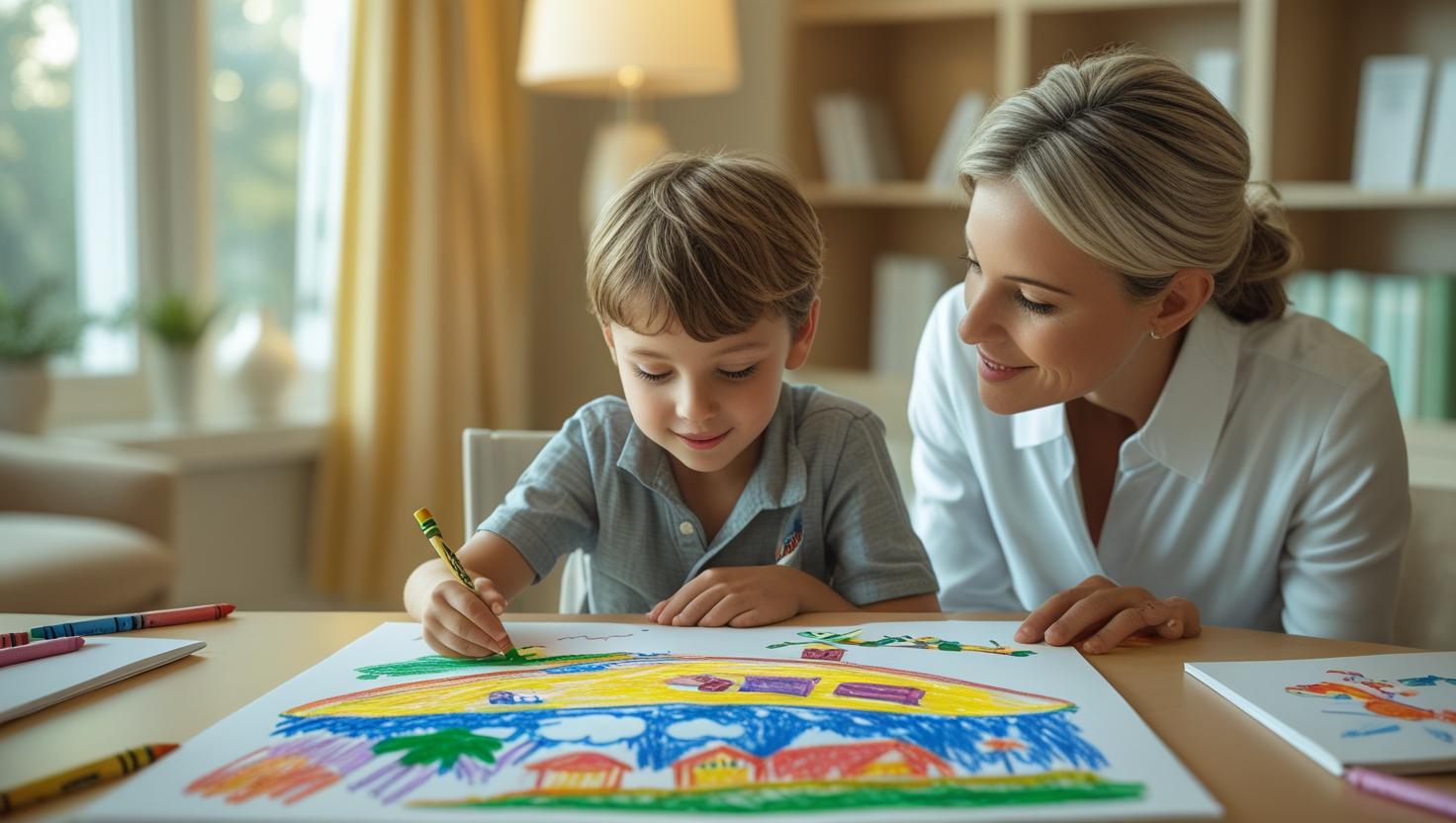Kids Sleep Psychology Explained: Patterns, Meditation & Stories
Understanding kids sleep psychology is essential for fostering healthy sleep habits, emotional well-being, and cognitive development in children.
Key Takeaways
- Consistent bedtime routines are crucial for children’s sleep quality.
- Sleep patterns significantly impact children’s emotional and cognitive development.
- Incorporating mindfulness and relaxation techniques can aid in better sleep.
Understanding Sleep Patterns and Dream Interpretation
Children’s sleep needs evolve as they grow, transitioning from 14-17 hours for newborns to about 9-11 hours for school-aged kids. Understanding these shifting sleep patterns is a cornerstone of kids sleep psychology. By tracking and analyzing how long and how well a child sleeps, parents and caregivers can detect potential issues such as insomnia or night terrors early. According to the Sleep Foundation, inadequate sleep is linked to behavioral problems, learning difficulties, and emotional dysregulation in children.
Dream interpretation plays a unique role in sleep psychology, especially in uncovering what might be troubling a child. For example, recurring dreams about school or being chased might signal anxiety or stress. At The Psychology of Bedtime, we explore how dream content can mirror a child’s inner world, providing useful clues to their emotional health. These insights are invaluable to understanding kids sleep psychology from both a behavioral and emotional lens.
To foster healthier dream patterns, surround your child with soft textures, dim golden lights, and the gentle scent of lavender to help them feel safe and cozy. Dream journals for older kids can also be a great way to promote self-awareness and open up conversations about what they’re experiencing mentally and emotionally.
“When Sarah’s 5-year-old started having frequent nightmares about being lost, she was at a loss herself. But after introducing a simple bedtime meditation and journaling routine, both of them started sleeping better—emotionally and physically.”
Summary: Understanding and tracking children’s sleep and dream patterns provides insight into their emotional and psychological development and enables proactive solutions for sleep-related issues.

The Therapeutic Power of Dreams and Dream Therapy
Dreams are not just fantastical narratives; they’re often reflections of a child’s subconscious mind. In therapy, dreams can be used to identify underlying fears, emotions, and unresolved conflicts. For instance, a child who frequently dreams about being lost might be dealing with anxiety about separation or major changes at home or school. This connection is a fundamental concept in kids sleep psychology.
Dream therapy can be integrated into counseling sessions where a child is encouraged to draw or retell their dreams, offering therapists valuable insights. This technique, supported by the NIH, has been shown to help children process trauma and build emotional resilience.
Simple dream interpretation at home can also be beneficial. Parents might ask their child gentle, open-ended questions about their dreams during breakfast or bedtime. The goal is not to “decode” the dream with clinical accuracy, but to show that their inner experiences matter and are safe to explore. More tips are available in our article on The Psychology of Bedtime.
“At first, I thought talking about dreams would scare my daughter more. But now it’s our little morning ritual, and I understand her better than ever,” says Emily, a mother of three.
Summary: Dream therapy helps uncover children’s subconscious emotions and offers a supportive path for healing and emotional expression through guided conversation and creativity.

The Benefits of Meditation for Better Sleep
Meditation is one of the most effective tools in managing kids’ sleep challenges. Studies, such as those referenced by Healthline, confirm that regular meditation reduces anxiety and increases melatonin—the hormone responsible for regulating sleep. For children, it can take the form of simple breathing exercises, story-based meditations, or progressive muscle relaxation. These practices align closely with principles in kids sleep psychology.
A great way to start is to introduce a short, guided bedtime meditation using an app or recording tailored to kids. These meditations can feature friendly voices, soothing music, and imaginative journeys to help children wind down. Our guide, Best Meditation Techniques for Sleep, highlights several child-friendly approaches.
- Mindfulness breathing: Ask the child to focus on their breath going in and out, perhaps using a stuffed animal rising and falling on their belly.
- Visualization: Encourage imagining a safe, peaceful place like a cozy cabin or a magical garden.
- Mantra repetition: Simple phrases like “I am calm” can help ease stress and reinforce positive self-talk.
“At first, I thought meditation was too advanced for my son, but now it’s his favorite part of bedtime,” says Rachel, a mom of two.
Consistency is key—just like brushing teeth, incorporating meditation into the nightly routine makes it a habit. Even five minutes a night can create lasting benefits.
Summary: Meditation offers a calming bedtime ritual that improves sleep quality and emotional balance, helping children transition smoothly from wakefulness to restful slumber.

Children’s Stories and Soothing Young Minds
Reading bedtime stories is more than a beloved tradition; it’s a science-backed method to improve kids’ sleep and emotional health. Stories provide familiarity, security, and predictability—three things children crave. According to PBS, reading aloud helps develop empathy, critical thinking, and language comprehension. This is another integral aspect of kids sleep psychology.
Stories that include themes of dreams, adventure, and gentle emotions encourage kids to reflect on their feelings. Books like “The Rabbit Listened” or “Goodnight Moon” create an emotional cadence that matches the winding-down process kids need before bed. Dive deeper into this topic in Why Children Love Bedtime Stories.
To turn storytime into a heartfelt nightly ritual:
- Choose books with positive themes and calming illustrations.
- Let the child choose the story to increase engagement.
- Use soft lighting and read in a slow, soothing voice.
- Pause to ask questions or discuss parts of the story, encouraging emotional expression.
Summary: Bedtime stories nurture children’s imagination and emotional development, making them a foundational tool in sleep psychology and nightly routines.

FAQ
- What is kids’ sleep psychology?
- Kids’ sleep psychology is the study of how children’s mental and emotional states affect their sleep patterns. It involves understanding behaviors, stressors, routines, and sleep-related habits.
- How can meditation improve a child’s sleep?
- Meditation calms the nervous system, reduces anxiety, and prepares the brain for restful sleep. Guided meditations using stories or soothing sounds are especially effective for children.
- Do bedtime stories help with emotional development?
- Yes, bedtime stories can support emotional intelligence by helping children understand and express feelings, connect with characters, and feel secure during nighttime routines.



